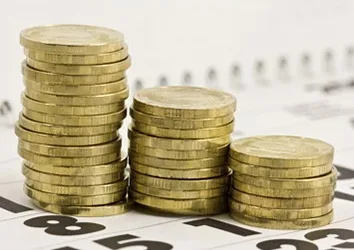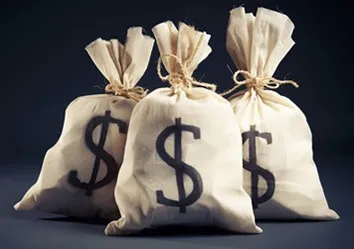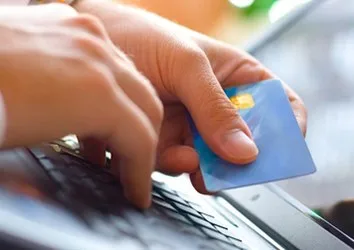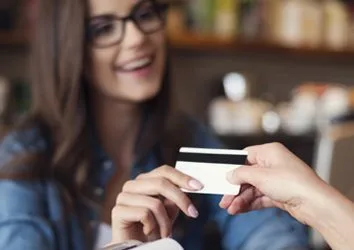Compare bank accounts
Compare bank accounts with $0 account fees, $0 ATM fees, instant payments with PayID and a free debit card for day-to-day purchases.
We’re reader-supported and may be paid when you visit links to partner sites. We don’t compare all products in the market, but we’re working on it!
The right bank account can help you manage your day-to-day expenses, pay your bills, receive your salary or wages and let you make purchases where and when you want all over the world using your own money.
If you're looking for a new bank account, you've come to the right place. You can compare a range of bank accounts here and open one online for free in minutes. Plus, you'll be glad to know that your deposit up to $250,000 in any of the Australian bank accounts below is guaranteed by the government, so your money is in safe hands.
We update our data regularly, but information can change between updates. Confirm details with the provider you're interested in before making a decision.
Compare up to 4 providers
Banks
What is a bank account?
A bank account is a deposit product that holds your money. Bank accounts are offered by banks, credit unions, building societies or other financial institutions. You can get your salary or wages deposited into your bank account directly by your employer, which you can access whenever you want by withdrawing the cash from an ATM, making EFTPOS purchases with the linked debit card or paying your bills.
Key features and benefits of a bank account
- Safer than cash. Bank accounts offer a secure place to hold your money, which is much safer (and easier) than keeping your money in physical cash. Plus, your deposit up to $250,000 in an Australian bank account is protected by the Australian Government.
- Easy access to your money. The money in your bank account is yours to access and use whenever you want. You can withdraw cash from your bank account at an ATM, use the debit card to purchase things in stores, pay your bills or shop online 24/7.
- Free debit card. Bank accounts come with a free debit card that's linked to your account, usually either visa or Mastercard debit card. You can use this debit card in stores in Australia and overseas, at ATMs and online. Unlike a credit card, the money on your debit card is limited to what you deposit into the account.
- Transaction history. You can see all your past bank account transactions and purchases by logging into your Internet banking portal or mobile banking app. This is handy to keep track of where and how you're spending your money.
- No interest charged. Unlike a credit card which is a type of loan that you need to repay, the money in your bank account is your money. You can only spend what you have in the bank account, so there are no interest repayments to worry about and there's no risk of spending more than you have.
- Mobile banking app. Most bank accounts offer mobile app access. This means you can keep track of your bank account, manage your expenses and see your transactions in the mobile banking app 24/7.
- Linked to savings. A bank account can also be linked to a savings account with the same bank, allowing you to move money from your savings into your bank account so you can spend it when needed.
How to compare bank accounts in Australia
When starting your bank account comparison, consider the following features to make sure you choose the right bank account for you.
Consider the account keeping fees.
Look for an account that charges no or low monthly account keeping fees. Or, if there is an account keeping fee, you can often get the fee waived by depositing a certain amount of money into the account each month.
Check the bank account deposit conditions.
If the account does require your to meet a monthly deposit requirement (this can be anywhere from $200 to $2000 a month), make sure it's an amount that you can easily meet each month.
Check the ATM fees.
Will you be charged an ATM withdrawal fee to access your cash? Don't forget to check the overseas ATM withdrawal fee, too, as this can be quite high with some bank accounts.
Compare the overseas fees and charges.
If you travel a lot or regularly shop online from overseas retailers, check what the international transaction fee when comparing bank accounts. Some bank accounts don't charge an international transaction fee at all, and other will waive this fee if you meet certain deposit conditions.
Look at the linked savings account.
If you want to link a savings account to your bank account with the same bank, check what interest rate you can earn with the savings account. If you're trying to save money, the more interest you can earn on your savings account, the better.
Consider the payment options.
If you want to make contactless purchases with your phone, check that the bank account supports Apple Pay, Google Pay or Samsung Pay. If you want to make instant bank-to-bank transfers, looking for an account that offers instant payments with PayID and Osko.
Do you need a joint account?
If you're looking for a bank account that you can share with another person (for example your partner), make sure you check if the account can be opened as a joint bank account.
How to open a bank account
You can open a new bank account online in a matter of minutes. Here's how to open a bank account in 5 steps:
- Compare. Compare bank accounts using the table above and find the right one for you.
- Apply online. Once you've chosen your bank account, click 'Go to Site' to complete the online application.
- Add your details. Fill in your name, age, address and contact details as well as your residency status.
- Verify your identity. Once the bank has verified your identity with your driver's licence, passport or other form of ID, your account will be opened instantly.
- Fund your account. Transfer some money into your new bank account from another account, or deposit cash into the account via a bank branch, ATM or the Post Office. You'll soon receive your debit card in the mail.
Bank account or savings account: which do you need?
A bank account and a savings account are two different types of accounts that serve different purposes. A bank account is a transaction product that is designed for daily use to buy things in stores, take more out from ATMs, pay bills, transfer money to friends and receive your salary or wages. A bank account comes with a debit card but doesn't pay interest on your money.
A savings account is another account that you can link to your bank account. A savings account does pay interest on the money in the account, as it's designed to help you save. It doesn't come with a debit card as it's not meant to be used as a transaction account for purchases.
How to choose a bank account
Need a bit more help choosing a bank account? The right bank account for you will depend on how you plan to use the account and what you're looking for.
Alison Banney is the banking and investments editor at Finder. She has written about finance for over 8 years, with her work featured on sites including Yahoo Finance, Money Magazine and Dynamic Business. She has previously worked at Westpac, and has written for several other major banks including BCU, Greater Bank and Gateway Credit Union. Alison has a Bachelor of Communications from Newcastle University, with a double major in Journalism and Public Relations. She has ASIC RG146 compliance certificates for Financial Advice, Securities and Managed Investments and Superannuation. Outside of Finder, you’ll likely find her somewhere near the ocean.






